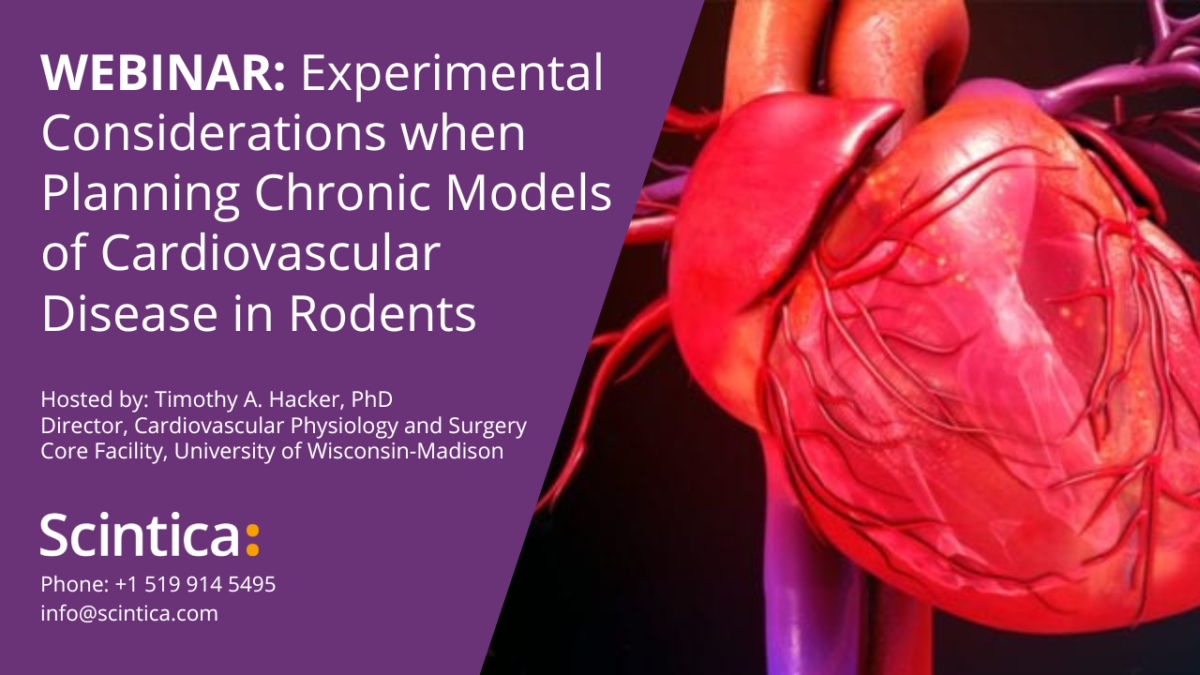WEBINAR: Experimental Considerations when Planning Chronic Models of Cardiovascular Disease in Rodents
Join Dr. Tim Hacker for a discussion on experimental design, strategy, technology, common challenges and best-practices associated with planning long-term, chronic models of cardiovascular disease in rodents.
Creating chronic, long-term models of heart disease in rodents continues to be a fundamental component of translational, surgical and drug discovery research programs. Studying the development and progression of cardiovascular disease in the same subject over-time offers unique insights compared to acute in vivo procedures alone, and presents valuable opportunity to combine powerful technologies for studying changes in hemodynamics and cardiovascular function.
However, planning and executing successful and reproducible long-term cardiovascular studies in rodents presents a multitude of challenges, such as creating a stable and reproducible disease model, recording the appropriate functional measurements, knowing when to record data and how to compile information over the course of the experiment, and ultimately how to best optimize reproducibility and translatability of your experimental findings.
In this webinar Dr. Timothy A. Hacker will discuss strategies and experimental design of long-term, chronic cardiovascular research in rodents. Specifically, he will review the use of implantable telemetry, imaging and complimentary technologies for cardiovascular research, highlighting when to adopt one technology versus another and the advantages and limitations of each. He will share best-practices related to data acquisition and analysis, data interpretation and how to prepare data in support of your research hypothesis. Additionally, he will touch on fundamental topics relevant to all preclinical cardiovascular experimentation, such as standardization, animal care, the 3Rs and regulatory constraints.
Key topics covered during this webinar will include…
- Why do some translational models correlate poorly with human disease?
- Why are chronic models important?
- Animal model and rodent strain choice
- How to choose the right tools based on your research objectives
- How to systematically approach data review and analysis and draw conclusions that support your research hypothesis

About the Speaker (s)

Director, Cardiovascular Physiology and Surgery Core Facility
University of Wisconsin-Madison
Dr. Hacker is a Senior Scientist and Director of the Cardiovascular Physiology and Surgery Core Facility at the University of Wisconsin-Madison. His work at the Cardiovascular Research Core Lab facility provides researchers with surgical models of disease as well as non-invasive imaging and invasive physiologic monitoring of the disease process. Dr. Hacker has established cardiac disease models in mice, rats, rabbits, pigs, dogs and primates. His lab documented the variability in mouse coronary anatomy and was the first lab to publish right ventricular pressure-volume data in mice. Currently, the facility is conducting studies focusing on cell delivery devices and targeting, cell tracking, heart failure, arrhythmia, gene, drug and cell therapy and other cardiovascular diseases. His work examining defects in the lamin protein have led to a phase I clinical trial (2014) to test a drug which slows or even reverses heart failure associated with lamin mutations.